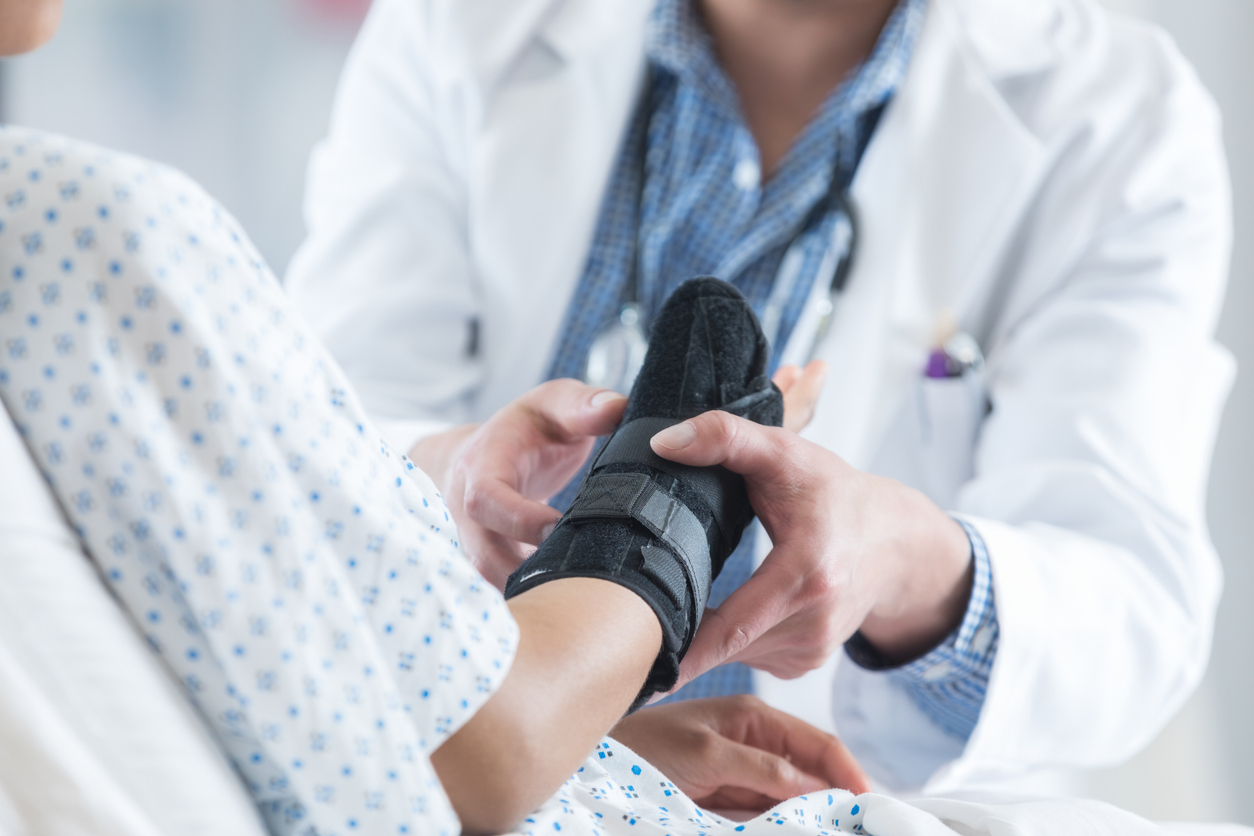
The triangular fibrocartilage complex (TFCC) is a network of ligaments, tendons, and cartilage that sits between the ulna and radius bones on the small finger side of the wrist. When you rotate your hand or grasp something with it, the TFCC stabilizes and cushions the wrist.
The TFCC is vulnerable to damage due to its structural complexity, and injuries are common, one of which is a wrist sprain or tear.
Types of Triangular Fibrocartilage Complex (TFCC) Tears
Triangular fibrocartilage complex (TFCC) tears are categorized as traumatic (Type 1) and degenerative (Type 2(:
- Type 1 triangular fibrocartilage complex tears occur because of a traumatic fall or injury to the wrist.
- Type 2 triangular fibrocartilage complex tears occur because of continual use and develop more gradually.
Symptoms of Triangular Fibrocartilage Complex (TFCC) Tears
Pain and a clicking sound when the wrist is moved in certain directions are the most common symptoms of a triangular fibrocartilage complex (TFCC) tear or sprain. Other symptoms include:
- Loss of grip strength
- Swelling in the wrist
- Pain when the wrist is bent from side to side
- Sudden onset of wrist pain
Complications of a TFCC Tear
It’s possible that a minor TFCC tear will heal on its own. A severe TFCC tear, on the other hand, can result in a weak or unstable wrist if left untreated.
Conservative Treatments
Orthopedic doctors first attempt to treat TFCC tears conservatively. Examples of such treatments are:
- Medication: Anti-inflammatory medications (such as NSAIDs) can help reduce swelling and relieve pain.
- Bracing: Keeping your forearm and wrist stable with a brace or splint can allow your TFCC to heal.
- Injections: Cortisone shots help reduce the swelling of torn tissue.
- Physical or occupational therapy: Exercises can strengthen the muscles in your wrist and forearm to prevent further injury.
Surgical Treatment
Your doctor may recommend minimally invasive surgery if you have persistent TFCC tears or if conservative treatments have proved to be ineffective. The most common surgery used to treat TFCC is arthroscopy.
What is Arthroscopy?
Arthroscopy is a surgical procedure that is used to diagnose and treat structural problems in joints, which often cause pain, instability, or other dysfunction. The surgeon uses an arthroscope, a long, thin tube with a video camera and light on the end to see inside the joint. The orthopedic surgeon will use miniature tools to repair the damage by making a series of tiny incisions along the outside of the wrist.
Advantages of Arthroscopy
Arthroscopy is a minimally invasive procedure. It takes place through small incisions, unlike traditional open surgery, which requires one large incision to access the inside of the wrist. Compared to open surgery, the benefits of arthroscopy include:
- Faster recovery
- Less pain
- Minimal blood loss and scarring
- Lower risk of infection
Potential Risks/Complications of Arthroscopy
Arthroscopy is a relatively safe procedure. Potential, rare complications include:
- Allergic reaction to anesthesia
- Blood clots, including deep vein thrombosis (DVT)
- Damage to surrounding tissue or nerves
- Excessive bleeding or swelling
- Infection
Hand Specialist in North Dakota
Here at The Bone & Joint Center, we have hand specialists on our team who can diagnose and treat your condition and restore your hand strength and function. We have locations across North Dakota for your convenience.
If you have any questions or would like to make an appointment, contact our friendly staff today by calling (800) 424-2663 or by filling out our convenient online form. We look forward to helping you find long-term relief from your hand pain!

